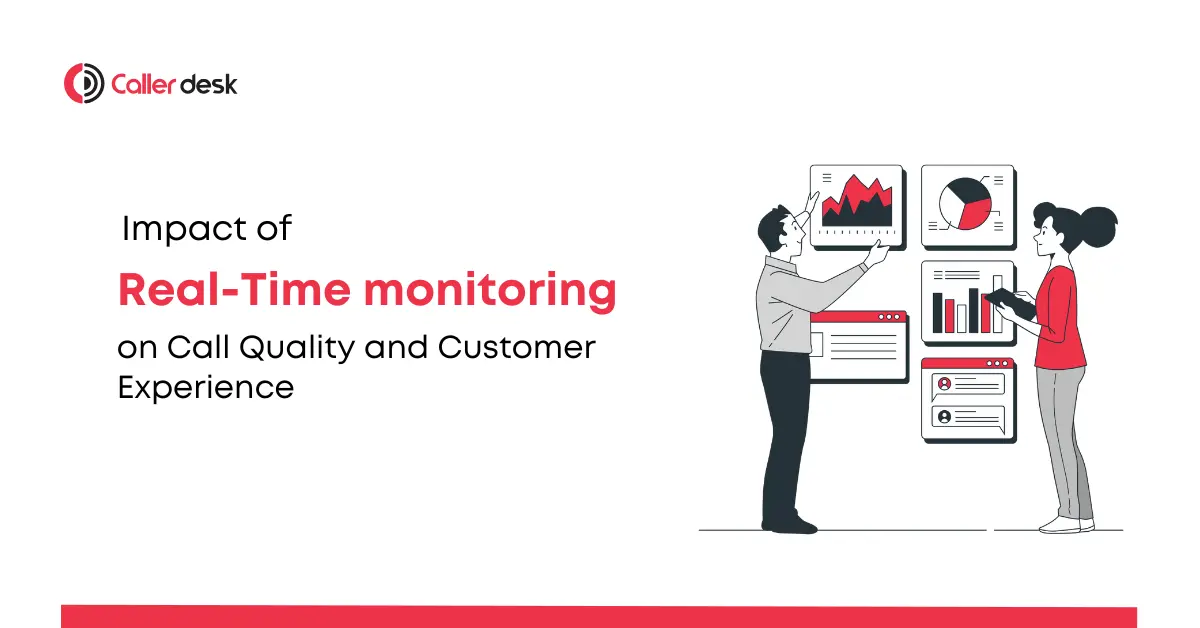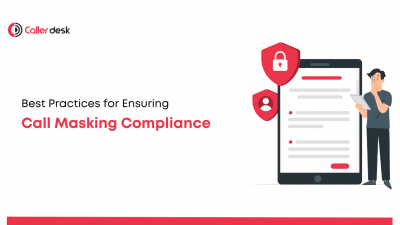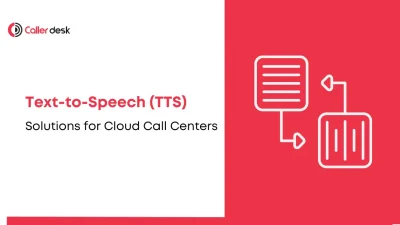Have you ever wondered why some businesses consistently provide outstanding customer service while others struggle to meet customer expectations? The secret often lies in the efficiency of their call center operations. In a world where customers demand instant solutions and personalized experiences, businesses must adopt advanced tools to stay competitive.
One such transformative tool is real-time monitoring, a feature that allows businesses to track live interactions, identify issues as they arise, and respond proactively. By leveraging real-time insights, businesses can not only improve agent performance but also deliver exceptional customer experiences that build long-term loyalty.
In this blog, we’ll dive into what real-time monitoring is, how it enhances call quality, and why it’s a game-changer for customer satisfaction in cloud-based call centers.
What is Real-Time Monitoring?
Real-time monitoring refers to the process of tracking live call center operations and agent-customer interactions as they occur. Unlike traditional post-call analysis, which provides insights after an interaction is complete, real-time monitoring offers immediate visibility into key metrics such as:
- Call volume: Understanding how many calls are in progress or in queue.
- Agent performance: Tracking agent adherence to scripts, communication style, and resolution rates.
- Customer sentiment: Analyzing tone, emotion, and overall satisfaction during live interactions.
- Compliance: Ensuring agents adhere to industry regulations and company policies.
With real-time monitoring, call center supervisors can actively intervene during live calls, guiding agents, resolving issues, and ensuring seamless customer experiences.
How Real-Time Monitoring Improves Call Quality
1. Addressing Issues in the Moment
One of the biggest advantages of real-time monitoring is the ability to resolve issues as they happen. Whether it’s a frustrated customer, an agent struggling with a query, or a potential compliance breach, supervisors can step in immediately to provide support and prevent the situation from escalating.
Example:
Imagine a customer expressing dissatisfaction with a delayed order. With real-time monitoring, supervisors can identify the issue, guide the agent to provide a satisfactory solution, and ensure the interaction ends positively.
2. Delivering Instant Feedback to Agents
Traditional feedback processes often involve reviewing call recordings after the fact. While useful, this approach misses the opportunity to correct mistakes in real-time. With real-time monitoring, supervisors can provide immediate guidance during active calls, enabling agents to adjust their approach and deliver better results.
Key Benefits:
- Helps agents improve their performance on the spot.
- Reduces the likelihood of negative customer experiences.
- Builds agent confidence through timely coaching.
3. Enhancing Compliance and Reducing Risks
For industries like finance, healthcare, and telecommunications, compliance is critical. Real-time monitoring tracks conversations for adherence to regulatory guidelines and company policies, flagging potential issues before they become major problems.
How It Helps:
- Ensures sensitive information is handled appropriately.
- Prevents non-compliance penalties or reputational damage.
- Builds trust with customers by maintaining ethical standards.
How Real-Time Monitoring Elevates Customer Experience
1. Proactive Problem Resolution
Real-time monitoring enables businesses to identify and resolve issues during live interactions. By intervening proactively, managers can turn potentially negative experiences into positive outcomes.
Example:
If a call escalates due to miscommunication, a supervisor can step in to mediate and provide clarity, ensuring the customer’s concerns are addressed effectively.
2. Understanding Customer Preferences
By analyzing live data, businesses gain valuable insights into customer behavior, preferences, and recurring concerns. These insights can be used to:
- Refine products and services.
- Develop targeted communication strategies.
- Anticipate and address customer needs more effectively.
3. Personalizing Customer Interactions
Real-time monitoring tools with sentiment analysis enable agents to tailor their approach based on customer emotions and preferences. Personalization fosters stronger connections, improves customer satisfaction, and encourages loyalty.
Key Benefits of Real-Time Monitoring for Call Centers
1. Enhanced Agent Productivity
- Live performance tracking enables managers to address inefficiencies immediately.
- Real-time coaching ensures agents remain focused and confident during calls.
- Motivated teams deliver consistently high-quality service.
2. Better Resource Allocation
- Dynamic staffing adjustments minimize wait times and optimize agent workloads.
- Improved scheduling ensures adequate coverage during peak hours, preventing overstaffing or understaffing.
- Cost savings result from reduced inefficiencies and better resource utilization.
3. Improved Call Quality and Service Standards
- Ensures agents adhere to best practices for tone, empathy, and communication style.
- Identifies recurring issues, enabling process improvements and agent training.
- Ensures every call meets quality benchmarks, reinforcing customer trust.
Best Practices for Implementing Real-Time Monitoring
To maximize the benefits of real-time monitoring, follow these best practices:
1. Focus on Qualitative Insights
While metrics like average handling time are important, qualitative aspects such as empathy, tone, and problem-solving abilities provide a fuller picture of call quality.
2. Train Supervisors and Agents
Equip your team with the skills to interpret real-time data and act on it effectively. Regular training ensures they can maximize the potential of real-time monitoring tools.
3. Leverage Advanced Tools
Invest in cloud-based solutions like CallerDesk that offer robust real-time monitoring features. Look for tools with:
- Live call analytics.
- Sentiment analysis.
- Compliance tracking and alerts.
4. Provide Continuous Feedback
Real-time monitoring is most effective when paired with regular feedback. Use insights to:
- Guide agents toward improvement.
- Celebrate achievements to boost morale.
- Address challenges proactively.
5. Integrate with CRM Systems
Seamless integration with CRM platforms enables agents to access customer data in real-time, ensuring personalized and efficient service delivery.
Why Choose CallerDesk for Real-Time Monitoring?
CallerDesk is a leader in providing advanced cloud-based call center solutions. Our platform offers:
- Live Dashboards: Monitor critical metrics and agent performance in real time.
- Compliance Alerts: Ensure adherence to regulations and policies.
- AI-Driven Insights: Analyze customer sentiment and agent behavior to drive continuous improvement.
- Seamless Integration: Connect CallerDesk with your CRM for a unified customer experience.
With CallerDesk, your call center gains the tools to operate at peak efficiency, ensuring exceptional service delivery and long-term customer loyalty.
Conclusion
Real-time monitoring is revolutionizing call center operations by enabling businesses to address issues proactively, guide agents effectively, and deliver superior customer experiences. By leveraging live insights, call centers can enhance call quality, improve resource allocation, and build stronger customer relationships.
Adopting a solution like CallerDesk ensures you stay ahead in a competitive market. Empower your team, optimize your operations, and exceed customer expectations with real-time monitoring.
Ready to transform your call center operations? Schedule a free demo with CallerDesk today and discover the difference real-time monitoring can make!
Frequently Asked Question
1. What is real-time monitoring in call centers?
Real-time monitoring refers to the process of tracking live agent-customer interactions and call center operations as they occur. It enables managers to address issues proactively, ensure compliance, and optimize customer experiences by providing instant feedback and insights.
2. Why is real-time monitoring important for call quality?
Real-time monitoring helps address issues during live calls, ensuring agents stay on track, maintain compliance, and provide excellent customer service. This proactive approach reduces escalations, improves call quality, and enhances customer satisfaction.
How does real-time monitoring enhance customer experience?
Real-time monitoring enables proactive problem resolution, personalized customer interactions, and immediate response to emerging issues. This ensures customers feel valued and receive faster, more tailored support.
4. What metrics can be tracked with real-time monitoring tools?
Metrics tracked include live call volume, agent performance (e.g., average handling time, first-call resolution), customer satisfaction (CSAT), wait times, and compliance adherence.
5. What are the benefits of using CallerDesk for real-time monitoring?
CallerDesk offers advanced real-time monitoring features, including live dashboards, AI-driven insights, compliance alerts, and seamless CRM integration. These tools empower call centers to improve productivity, optimize performance, and deliver superior customer experiences.
6. How does real-time monitoring improve agent performance?
By providing immediate feedback, live coaching, and actionable insights, real-time monitoring helps agents address challenges on the spot, refine their skills, and deliver consistent service quality.
7. Is real-time monitoring suitable for small call centers?
Yes, real-time monitoring benefits call centers of all sizes by improving efficiency, resource allocation, and customer satisfaction. Scalable solutions like CallerDesk make it accessible and impactful for smaller teams.
8. How does real-time monitoring ensure compliance?
Real-time monitoring tracks agent behavior and language during calls, flagging potential compliance violations instantly. This allows managers to address issues promptly, reducing legal and reputational risks.
9. What tools are needed for effective real-time monitoring?
Essential tools include live dashboards, sentiment analysis, compliance alerts, call recording systems, and AI-driven insights. CallerDesk integrates all these features into a seamless, cloud-based platform.
10. How can businesses implement real-time monitoring effectively?
To implement real-time monitoring successfully, choose the right platform, train agents and supervisors to use live data effectively, integrate with CRM systems, and establish clear feedback loops for continuous improvement.





